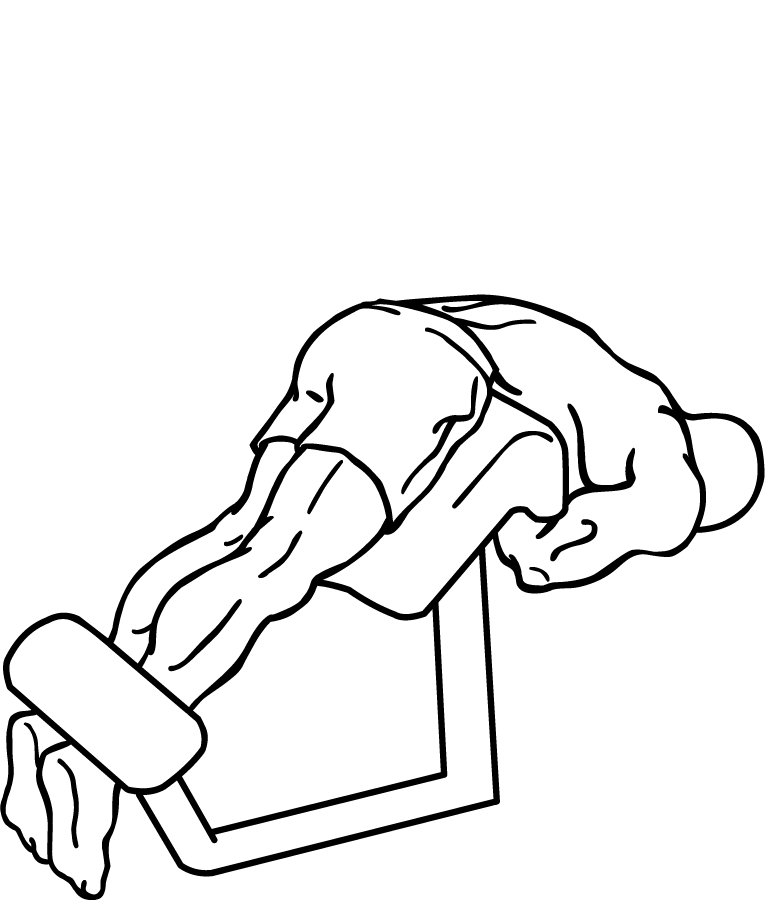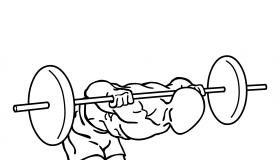Last Updated on September 30, 2022
When it comes to developing a strong, flexible, and resilient core, Hyperextensions are an essential exercise. Often referred to as back extensions, this movement primarily targets the lower back, but it also engages the glutes, hamstrings, and core muscles, making it an excellent addition to any fitness routine. Whether you’re an athlete, someone recovering from injury, or looking to improve overall mobility and strength, hyperextensions offer a versatile and effective solution.
Why Hyperextensions Are Important
Hyperextensions are a must for anyone aiming to build a strong and flexible back. Here’s why they are so effective:
- Improved Lower Back Strength: The lower back is often a weak point for many people, especially those who sit for extended periods. Hyperextensions strengthen the muscles along the spine, improving posture and reducing back pain.
- Enhanced Core Stability: The movement also engages the core muscles, providing better overall stability. A strong core is essential for balance and supports other exercises like squats, deadlifts, and overhead presses.
- Increased Flexibility: Performing hyperextensions regularly improves the flexibility of the hamstrings, glutes, and lower back. This flexibility aids in functional movements like bending and lifting, and reduces the risk of strains or injuries.
- Glute and Hamstring Activation: In addition to the back muscles, hyperextensions activate the glutes and hamstrings, making it a compound movement that develops multiple muscle groups simultaneously.
Step-by-Step Guide to Performing Hyperextensions
To ensure you perform hyperextensions effectively and safely, follow these detailed instructions:
- Set Up the Hyperextension Bench:
- Adjust the hyperextension bench so that your ankles are securely tucked under the footpads and your thighs rest comfortably on the top pad. The bench height should allow your hips to move freely, enabling a full range of motion without restriction.
- Make sure the equipment is stable and locked in place before beginning the exercise to prevent any movement during the reps.
- Assume the Starting Position:
- Position yourself on the bench with your body facing down. Your feet should be anchored under the footpads and your thighs flat on the bench pad. Ensure your hips are aligned with the edge of the bench, giving you enough space to bend forward.
- Fold your arms across your chest or, for added intensity, place your hands behind your head. Keep your back straight and engage your core muscles before you begin the movement.
- Execute the Hyperextension:
- With a neutral spine, slowly bend at the waist, lowering your upper body toward the floor. Focus on keeping your back flat and your core tight to maintain stability. The goal is to hinge at the hips while your back remains straight.
- Lower your torso until you feel a stretch in your hamstrings and glutes. Avoid rounding your lower back, as this can place unnecessary strain on the spine.
- Return to the Starting Position:
- Engage your glutes and lower back muscles as you raise your torso back to the starting position. The movement should be controlled, and your back should stay neutral throughout the lift.
- As you return to the starting position, squeeze your glutes and pause briefly at the top for maximum muscle activation.
- Repeat:
- Perform the desired number of repetitions (typically 10-15 reps per set) while maintaining proper form throughout. Focus on slow, controlled movements to maximize the benefits and prevent injury.
Tips for Optimal Performance
Hyperextensions are effective when performed correctly. Here are some tips to ensure you get the most out of this exercise:
- Maintain a Neutral Spine: Keeping your back straight and neutral throughout the movement is crucial. Avoid rounding your lower back to prevent strain or injury. Focus on hinging at the hips, not the spine.
- Engage Your Core: Before you bend forward, tighten your abs to stabilize your torso. Engaging your core helps support your back and reduces the risk of overextending or arching your spine.
- Control the Tempo: Avoid rushing through the exercise. Slow, controlled movements ensure that the muscles are properly engaged and that you’re working through the full range of motion. Aim for a tempo of 2-3 seconds on the way down and up.
- Start with Body Weight: If you’re new to hyperextensions, begin with just your body weight. Once you’ve mastered the form, you can gradually add resistance, such as holding a weight plate or dumbbell, to increase the intensity.
Common Mistakes and How to Avoid Them
Although hyperextensions are a relatively simple exercise, there are several common mistakes that can reduce their effectiveness and increase the risk of injury. Here’s how to avoid them:
- Overextending the Back:
- Avoid lifting your torso too high when returning to the starting position. Overextending (arching the back excessively) can strain the lower spine. Stop when your body is in a straight line or slightly above, maintaining a neutral spine.
- Rounding the Back:
- Bending forward with a rounded spine places unnecessary pressure on the discs of the lower back. Focus on keeping your back flat as you hinge at the hips to maintain proper form and protect your spine.
- Using Too Much Weight Too Soon:
- Adding weight can increase intensity, but using too much weight before mastering the movement compromises form. Stick with body weight initially, and only add resistance when you can perform the exercise with perfect technique.
- Rushing Through Reps:
- Performing hyperextensions too quickly reduces the muscle engagement and effectiveness of the exercise. Slow down and concentrate on each phase of the movement, especially when lowering your torso.
Variations and Progressions
Once you’ve mastered the basic hyperextension, you can explore these variations and progressions to challenge your muscles differently and prevent workout monotony:
- Weighted Hyperextensions:
- Once you’re comfortable with body weight, hold a weight plate or dumbbell against your chest. This increases resistance and builds more strength in the lower back, glutes, and hamstrings.
- Single-Leg Hyperextensions:
- Lift one leg off the pad and perform the exercise with the other leg supporting your body weight. This variation challenges your balance and intensifies the engagement of the glutes and core muscles.
- Hyperextensions on an Exercise Ball:
- Using an exercise ball instead of a hyperextension bench adds an element of instability, engaging the core muscles further. Lie face down on the ball with your feet anchored against a wall for support, and perform the movement as usual.
- Reverse Hyperextensions:
- In this variation, you lie face down on a bench or hyperextension machine with your hips on the pad and legs hanging off. Instead of bending forward, you lift your legs behind you. This targets the glutes and hamstrings more intensely while reducing strain on the lower back.
Benefits of Hyperextensions
Hyperextensions provide several key benefits when integrated into a well-rounded workout routine:
- Lower Back Strength: Strengthening the lower back muscles not only improves posture but also supports other heavy lifts like deadlifts and squats, reducing the risk of injury.
- Core Engagement: This exercise works the core muscles, helping stabilize the spine and improving balance. A strong core is essential for overall physical performance and injury prevention.
- Flexibility Improvement: Regular practice of hyperextensions increases flexibility in the hamstrings, glutes, and lower back, which is beneficial for mobility and range of motion in daily activities.
- Enhanced Athletic Performance: Athletes, particularly those involved in sports requiring explosive movements, benefit from hyperextensions as they enhance lower back and hip strength, essential for sprinting, jumping, and rotational movements.
Integrating Hyperextensions into Your Routine
To maximize the benefits of hyperextensions, integrate them effectively into your workout plan:
- As a Warm-Up or Activation Exercise: Use light resistance and perform hyperextensions before your main workout. This prepares the lower back and core for compound lifts like deadlifts or squats.
- On Back or Leg Day: Incorporate hyperextensions into your back or leg day routine. Pair them with exercises like Romanian deadlifts or lunges to target the posterior chain comprehensively.
- As a Finisher: Use hyperextensions as a finishing exercise for your lower body workout. Perform higher reps with lighter weight to achieve a muscle pump, enhancing blood flow and recovery.
Frequently Asked Questions
1. How many sets and reps should I perform for Hyperextensions?
- For beginners, start with 3 sets of 10-12 reps using body weight. As you progress, aim for 3-4 sets of 12-15 reps and gradually increase the weight for more challenge.
2. Can I perform Hyperextensions at home?
- Yes, if you have access to a stability ball or a bench that allows you to perform a similar motion. You can also use resistance bands for added tension.
3. Is Hyperextension suitable for people with lower back pain?
- Hyperextensions can help strengthen the lower back and alleviate pain, but it’s important to start with light resistance and consult a healthcare professional or physical therapist to ensure it’s appropriate for your condition.
Final Tips for Success
- Warm Up Before You Begin: Always warm up your lower back, hamstrings, and core before performing hyperextensions. Dynamic stretches like hip circles, lunges, and light core activation exercises can prepare your muscles for the movement and reduce injury risk.
- Start with Body Weight: Master the technique using only your body weight. Focus on the quality of your movement rather than the amount of weight you lift. Once you have perfect form, slowly increase the resistance by adding a weight plate or dumbbell.
- Listen to Your Body: Pay attention to any discomfort or pain, particularly in the lower back. Hyperextensions should feel challenging, but they should not cause pain. If you experience discomfort, revisit your form and reduce the weight or range of motion.
Building a Routine Around Hyperextensions
Here’s how you can effectively include hyperextensions in your fitness regimen based on your goals:
- For Muscle Growth and Strength: Perform hyperextensions with moderate weight for 3-4 sets of 8-12 reps. Progressively increase the weight or try single-leg variations to continue challenging your muscles.
- For Flexibility and Mobility: Focus on higher reps (15-20 per set) using body weight or light resistance. Slow, controlled movements will improve your lower back and hamstring flexibility, making daily movements and other exercises easier.
- To Complement Compound Lifts: Pair hyperextensions with squats, deadlifts, or lunges as part of your strength training routine. This enhances the posterior chain and supports heavy lifting by building a solid, stable base.
Conclusion
The Hyperextension exercise is a versatile and effective tool for building a resilient lower back, strong core, and flexible posterior chain. Whether you’re a beginner or an advanced athlete, mastering hyperextensions can significantly improve your performance in other exercises and enhance your overall functional strength.
Incorporate hyperextensions into your routine with proper form and progression, and you’ll not only build a stronger back but also develop a balanced, stable, and injury-resistant body. With patience and consistency, you’ll see the benefits in your daily life and other training activities, supporting you in achieving your fitness and wellness goals.
Take your time to master this essential exercise, and you’ll unlock a new level of strength, flexibility, and resilience—one controlled rep at a time.







